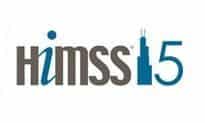White paper to support teleradiology
- 13 May 2013

A white paper on teleradiology is due to be issued by the European Society of Radiology in December this year, to coincide with the Radiological Society of North America conference in Chicago.
A taskforce made up of 13 members from different parts of Europe was set up by the ESR last year to look at the challenges posed by teleradiology and to develop the white paper.
The ESR hopes that the recommendations in the white paper will be used as a best practice document for all parties with an interest or involvement in radiology, including clinicians, hospital administrators and ICT staff.
The paper’s 11 chapters will cover topics such as regulatory and legal issues, patient safety, communication, technical issues and quality assessment.
Erik Ranschaert, chair of the taskforce, speaking in a personal capacity to EHI Imaging Informatics, said that the paper would be used influence political decision makers in Europe.
“The ESR is trying to explain to decision makers that teleradiology is more than an electronic service, it’s a complicated form of telemedicine which should not be different from radiology services that are provided locally. It takes a lot of effort to make politicians aware of that.”
Teleradiology is a big issue for European countries in which there is already widespread use of PACS systems, such as the UK, Germany and the Nordic countries, said Ranschaert.
In other countries, including France and Greece, film-based radiology systems still predominate.
Although teleradiology is already used in some countries, particularly those that have regional networks, there has been some nervousness about the adoption of cross-border teleradiology, in which images are sent for diagnosis to radiologists in another country.
There is a common misconception, said Ranschaert, that cross-border teleradiology always refers to the use of India or other countries where labour is cheaper.
In practice, there are good reasons for using cross-border teleradiology within the European Union countries, where the radiology qualifications in individual countries are regarded as equivalent throughout the member states, subject to local requirements allowed under the principle of ‘subsidiarity’.
“There’s an enormous shortage of radiologists in the UK, and constantly there are vacancies for radiologists everywhere,” he said.
“So if you don’t have a local radiologist, then of course there’s an advantage in using teleradiology because then you can improve the local situation by providing the expertise of someone else.
“Instead of physically importing a radiologist, you can use radiologists in another country where there might be not a shortage but an over-capacity in radiologists.”
In the Netherlands and Belgium, Ranschaert pointed out, there is surplus of radiologists: “In some parts of Europe there might be over capacity, in other parts there might be a shortage. Why shouldn’t we exchange capacity this way?”
Ranschaert believes that the white paper will be an important step in creating acceptable, widely-recognised standards for the use of teleradiology.
“We can gain a lot from when we do teleradiology professionally, when it’s happening according to internationally accepted standards, and when quality can be assured. But if you don’t provide standards or guidelines, that quality might be in danger.”





